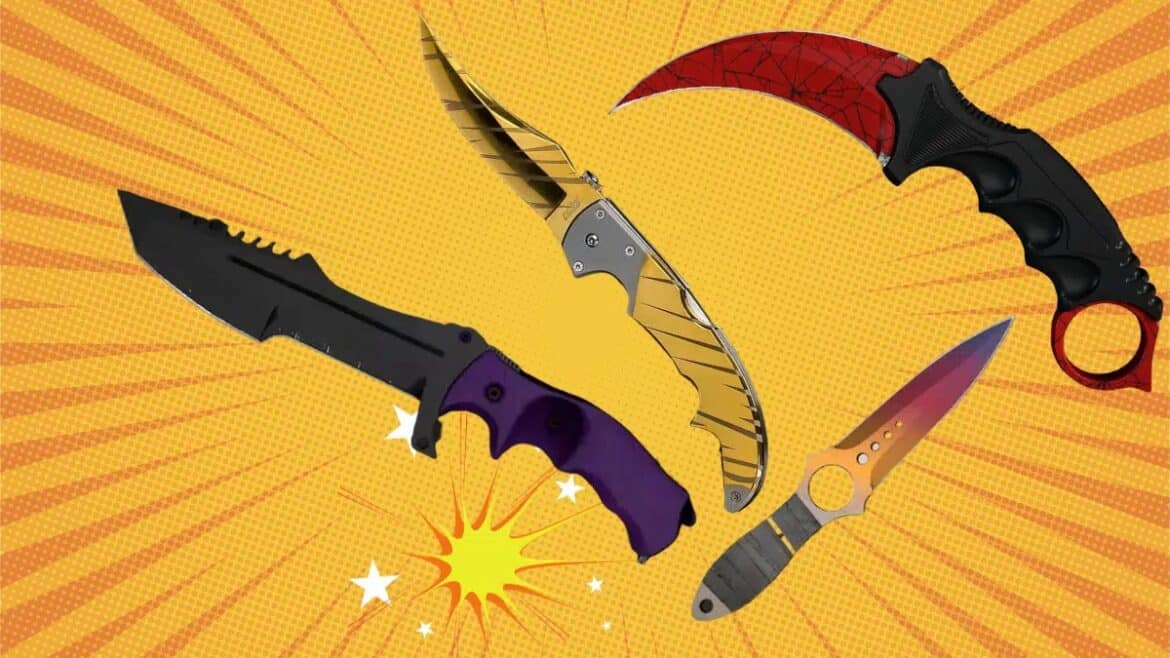Valve expanded the trade-up system with the October 2025 update: Players can now trade five red skins for a knife or gloves.
The new Trade-Up system in CS2
With the “Re-Retakes” update in October 2025, Valve expanded the trade-up system in Counter-Strike 2: Players can now trade five red (Covert) skins from the same collection for a knife or a pair of gloves. This is a significant change, as knives were previously only available through rare drops or the market. The new system not only allows standard skins, but also explicitly allows “trade-ups” to knife and glove skins, which can also receive StatTrak variants if the skins used are StatTrak.
A significant point is that newly crafted knives have a 7-day trade lock, which makes short-term “flipping” more difficult and is intended to maintain fairness in trading.
- However, the October 2025 update, which enabled trade-ups to knives and gloves, led to a dramatic slump in market volume. Within 24 hours, the market lost approximately $1.8 billion in value, plummeting from $6 billion to around $4.3 billion. Later, the market value even fell to around $3 billion and was only able to recover slightly.
Effects on the market of red skins and knives
The system led to a dramatic shift in value on the skin market. Red skins (Covert) experienced a massive price increase as they represent the “currency” for creating the now more accessible knives. Examples include the AUG | Chameleon, whose price rose from around $5 to over $50, and the P90 | Asiimov, which climbed from around $18 to over $100.
The MP7 | Neon Sport also saw its price increase tenfold to over $35. These observations illustrate the increased demand and inflationary pressure in this segment.
- In contrast, many knives and gloves lost considerable value. Since they can now be produced in large quantities through trade-ups, scarcity has decreased and the market price has fallen in some cases to only about 35% of its previous value. This has hit many of the expensive knives and gloves that were previously rarely traded hard. Marketplaces experienced volatility as players opportunistically bought or sold both skins and knives.
Updates and responses from Valve
Valve responded to market developments with a mini-patch confirming the tradability of trade-up knives. This clarification was important, as there was initially uncertainty in the market as to whether the new knives could also be sold or traded. Until further notice, trade-ups will remain part of the game, and no further adjustments have been announced so far. Experts expect prices to stabilize in the medium term, especially as the initial hype subsides and the supply of knife trade-ups continues to increase.
- For players, the new system means they can specifically collect and use red skins to obtain knives—a new strategic and economic component in CS2 that has permanently changed the market.
- The collector community reacted to the new trade-up update in CS2 with great skepticism and, in some cases, outrage. Many viewed the update as an encroachment on the exclusivity and value of their rare knives and gloves, which previously could only be acquired through luck or a lot of money. The sudden ability to craft knives through trade-ups with red skins led to a dramatic drop in value for many expensive items, in some cases by up to 70%. Collectors reported massive financial losses on social media platforms and in livestreams, which greatly dampened the mood in the scene.
- Content creators showed a tense mixture of interest and criticism. Many YouTubers and streamers addressed the new feature in tutorials, explanatory videos, and opinion pieces. They showed how to use trade-ups efficiently, but also warned of the risks, as success is random and not guaranteed. Some creators took the opportunity to produce “experimental content,” such as showing live trade-ups or analyzing the impact on the market. At the same time, however, there were also critical voices that described the update as distorting the market and posing a threat to existing investments in skins.

